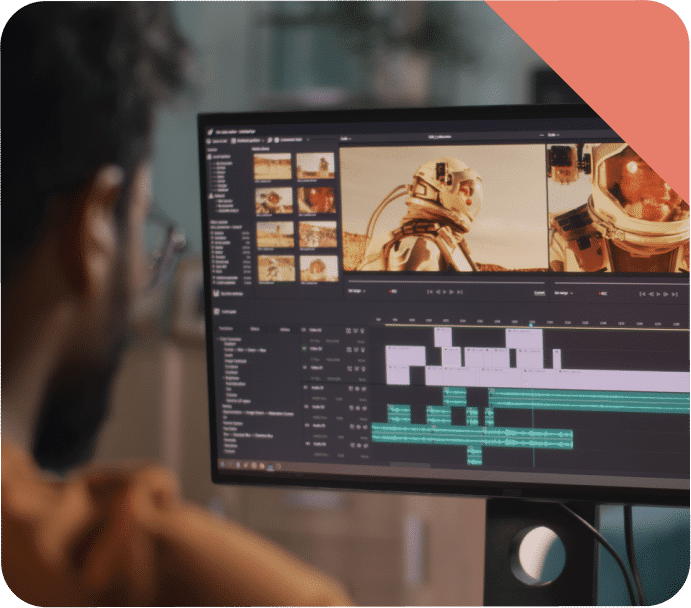Video Subtitling
Make your video content more accessible and engage a broader audience with video subtitling.

Benefits of Multilingual Subtitling
Video subtitling is the straightest and quickest road for your media to reach international audiences. Subtitle creation happens fast and it creates impact. While different markets prefer different means of localized media content, subtitling can also be considered an entry level effort to gauge interest in your content related to local markets.
Seeing how subtitled content performs locally and gathering usage data on your videos can serve as an effective way to drive further decisions in media localization. Successful market entry with localized subtitles can mean an involvement of AI voiceover down the road, or to really bring it forward, have a human voiceover for the videos of most exposure.
Contemporary subtitling happens with a lot of assistance from artificial intelligence tools that reduce the time to market to the point that subtitles can be deployed almost instantly. The subtitled content is then refined by qualified human subtitling specialists to bring forth the intended voice and style of the media content.
Is Captioning and Subtitling the same?
Captioning and subtitling are similar in that they both involve displaying text on a screen to convey spoken or written content to viewers.
However, they serve different purposes and are used in different contexts:
Captioning is related to accessibility
Captions are primarily used to make audio content accessible to individuals who are Deaf or hard of hearing. They provide not only the spoken dialogue but also additional information such as sound effects, background noises, and speaker identification.
Captioning is related to translation
Subtitles are primarily used for translating spoken dialogue or text from one language to another. They are often used in foreign films or TV shows to make them accessible to viewers who do not understand the original language.
Native offers full video subtitling services for a wide range of languages and video content, including tutorials, commercials, and broadcast media.
- Our teams make uses of smart AI and Machine Translation tools to reduce time to market and cut costs, allowing us to put extra focus on quality assurance and integration.
- We also conduct content analysis to ensure that the subtitles are consistent with your existing content, making them an effective localized addition to your videos.
- We provide seamless synchronization and embedding using integrations to make sure your subtitles always show at the right time and in the right formats, making them easier to read and your content easier to follow.
FAQ
We are highly skilled in the language of globalization, with a deep understanding of the complexities of language, culture, and logistics.
Video subtitling involves adding captions or subtitles to video content, making it accessible to a wider audience. This is especially important for viewers who are deaf, have hearing impairment, or speak a different language than the one in the video.
There are 3 main types of video subtitles: open caption, closed caption and SDH (Subtitles for the Deaf and Hard of Hearing). The type you choose will depend on the purpose of your videos and your intended audience.
Open caption means that subtitles are permanently ‘burned into’ your video. Closed caption subtitles can be turned on or off and will mostly appear at the bottom of the screen. SDH subtitles are similar to closed caption subtitles but are created specifically with a deaf or hard of hearing audience in mind, and describe other audible details in order to help the audience understand the action or mood of the scene, e.g., they might read ‘sad music plays’, or ‘indistinct chatter’.
Subtitles can be created manually or with the use of technology, such as AI powered speech recognition software. Native often uses AI powered tools and Machine Learning tools to automate and speed up the subtitling process and reduce costs associated with extensive manual work. Our teams can deliver subtitles with 100% accuracy in a much shorter time and for a reduced cost.
Subtitles can be displayed in a variety of ways – at the bottom of the screen, in a separate box, or overlaid on top of the video content itself. Subtitle appearance can be customized to your preferences and needs. Subtitles can also be created as separate files to be added to the video, or hard-coded to always appear when the video is played.
You can connect with a global audience, make your content more accessible to viewers with hearing impairments, and enhance overall viewer experience. Video subtitling can help to improve SEO by making your content more searchable and discoverable online.

